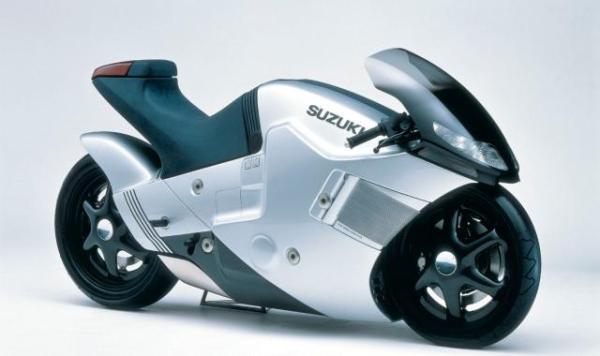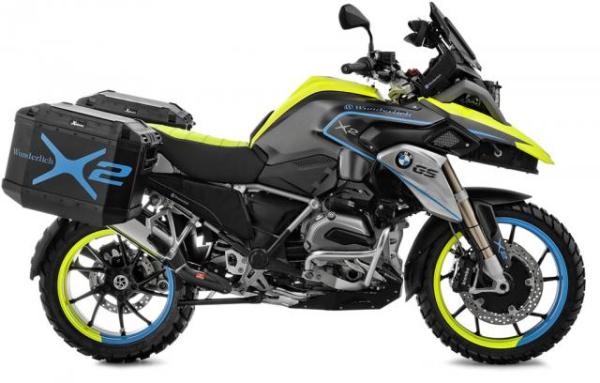Whatever happened to two-wheel-drive?
Are two-wheel drive-bikes an innovative engineering solution, or are they answering a question that nobody asked?

Member for
54 years 8 monthsWHILE THERE’S NO DENYING the breakneck pace of technological change in the last few decades there are always some future gizmos that companies promise are ‘just around the corner’ but never seem to actually arrive.
If Tomorrow’s World was to have been believed back in the 1980s, we’d all have flying cars and robot butlers by now. No doubt there have been dozens of serious projects attempting to make those things happen, but none have struck the magic balance of price and performance needed to become a real-world success.
If there’s ever been a motorcycling equivalent to such flights of fancy, it’s two-wheel-drive. Most manufacturers have looked at it. Many have tested it. Some have tried to sell it. None have been a big success.
But why not? Are there engineering flaws in the idea of driving both wheels, or are other forces at work to stop it reaching showrooms?
It’s hard to pinpoint the genesis of 2wd as an idea on bikes. As far back as the 1920s, German firm Megola was selling a front-wheel-drive bike, with a rotary engine mounted inside the front wheel, so it’s clear that even in the earliest days there were ideas to pull bikes along rather than pushing them from the rear wheel. American firm Rokon (see above) has been selling a two-wheel-drive off-road bike since the 1960s, based on a design that dates back to 1958. But as far as the mainstream is concerned, 2wd has always been on the fringes.
Back in the 1980s, there was a renewed interest in the idea of 2wd. It was understandable, since the Audi Quattro was starting a 4wd revolution in rallying, proving that driving every wheel could give a real advantage in performance rather than just in off-road traction. Immediately, bike companies started asking whether a similar benefit could be found on two wheels.
For a while, two-wheel-drive concept bikes were all the rage, both as off-roaders like Suzuki’s 1991 XF5 (top) and as high-performance road bikes like the same firm’s 1986 Nuda (above).
Meanwhile, more serious development work was underway at Ohlins, which started its own 2wd project back in 1992 and slaved at the idea for a full 15 years before finally calling it quits in 2007.
That system, which used a hydraulic pump mounted at the front sprocket, with flexible pipes taking high-pressure fluid to a hydraulically-driven motor in the front wheel hub, was intended to make it easy to fit 2wd to virtually any existing bike, and came closer than most to hitting the jackpot.
The Yamaha WR450F 2-Trac was the closest it came to production success, built in limited numbers and sold in limited numbers from 2004 as an official Yamaha product. But the Ohlins system was also trialled on a host of machines up to and including superbikes; 2wd-equipped prototypes of Yamaha’s R1 and Ducati’s 998 were built to prove its worth. Ohlins also made a 2wd KTM LC4 supermoto, a 2wd Aprilia Caponord adventure tourer and even 2wd scooters to show the system’s potential. Perhaps its greatest application, though, was a one-off mongrel nicknamed ‘Goofy’ – a Yamaha R1-based machine with high-rise suspension and wide bars inspired by the TDM850. Made back in 2000, it predated the idea of high-performance sports-adventure-tourers by at least a decade, but would fit in nicely alongside current machines like the BMW S1000XR.
Testing of these machines, both by Ohlins and the manufacturers they were being demonstrated to, showed that 2wd offered greater confidence, even on tarmac, and particularly in wet weather. As development progressed, the system was improved to adopt valves that could alter the amount of front drive, or turn it off entirely.
So why aren’t we riding 2wd bikes now?
While the Ohlins 2wd system went the furthest to prove that the idea was viable, it still had its problems. Although the hydraulic set-up was relatively light and compact, and didn’t require a complete redesign of the bikes it was fitted to, it was still fairly expensive to make, needing extreme levels of engineering precision, and sapped a bit of power. That meant any production model fitted with it would cost more and ultimately have less outright performance than a one-wheel-drive version of the same bike – quite a hard sell, even if you can prove that it’s better in the wet.
There was also a notable effect on the steering feel, and as manufacturers who’ve tried to sell hub-centre-steered bikes have discovered to their cost, customers aren’t normally welcoming to anything that feels unfamiliar. The extra confidence of 2wd is no use if you’re made uncomfortable by the feedback through the bars.
More development might have overcome that issue, but it also highlights another issue; tyres. Bike firms rely heavily on tyres supplied by outside companies, and to make 2wd work as well as it possibly could, you’d really need to get a tyre firm to develop rubber specifically for it. None of these hurdles were insurmountable on their own, but when combined, they became a significant obstacle.
But if you’re looking for the biggest reason for the decline in interest in 2wd, the timing of the Ohlins decision to end its project, in 2007, is perhaps the biggest clue. Back when it started, in 1992, the 4wd-mania in the car world that had grown in the 1980s was still in full swing and there was no doubt that by spreading your engine’s torque across more wheels, you’d improve traction and get better all-round performance. But by the mid ’00s, that had changed; advanced electronics were cheaply answering questions that previously only heavy, power-sapping and expensive all-wheel-drive systems could solve.
Look around today’s crop of bikes and you’ll see that systems like cornering ABS and lean-sensitive traction control are all the rage, and quickly filtering down from superbikes to much cheaper, everyday machines. These systems, controlled by tiny, cheap-to-make chips, are providing that extra confidence that 2wd might have eventually been able to offer, and doing it without any of the downsides.
Does that mean we’ll never see 2wd on a mainstream production bike? Actually, no, electronics could prove to be the saviour of 2wd rather than its executioner. We’re seeing massive leaps in the development of electric bikes, batteries and motors at the moment, and electric power could well be the ultimate solution to the tricky issue of efficiently getting drive to the front wheel.
Suzuki, KTM and BMW have all filed patent applications in recent years that suggest combining a conventional petrol engine driving the rear wheel with a hub-mounted electric motor in the front. Indeed, BMW’s system – or one very like it – was shown by tuning firm Wunderlich in 2015, when it unveiled a prototype 2wd version of the R1200GS. The idea has the same benefits of the Ohlins hydraulic 2wd project, in that it could be fitted to virtually any motorcycle with no major modifications. On top of that, it has the additional bonus of complete electronic control of the amount of drive going to the front, and the electric motor could even double-up as a generator to recharge batteries during braking, creating a fuel-saving hybrid element.
As fully-electric bikes become an ever more significant part of the market, 2wd will have yet another chance for mainstream success. Again, hub-mounted motors are already a known technology, and putting one in the front wheel is an idea that companies like Yamaha have already shown an interest it – the firm’s PES2 electric sports bike concept from 2015 is eventually expected to get a production spin-off, and featured exactly that technology.
So, what happened to 2wd? So far, it’s simply been out-evolved by rival technologies. But by breeding with those technologies instead of competing against them, there’s still a chance it could one day become the dominant species…


















